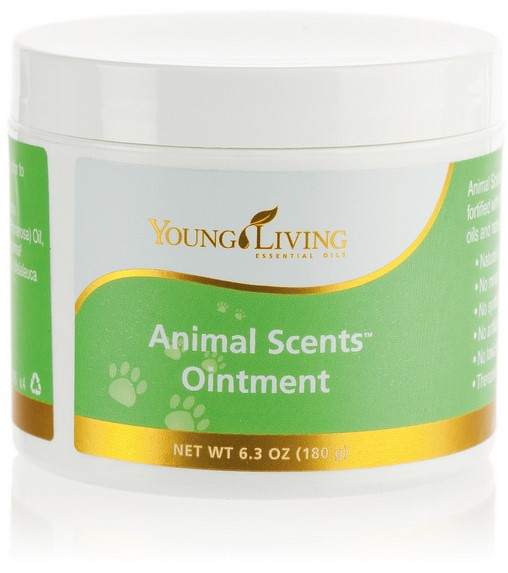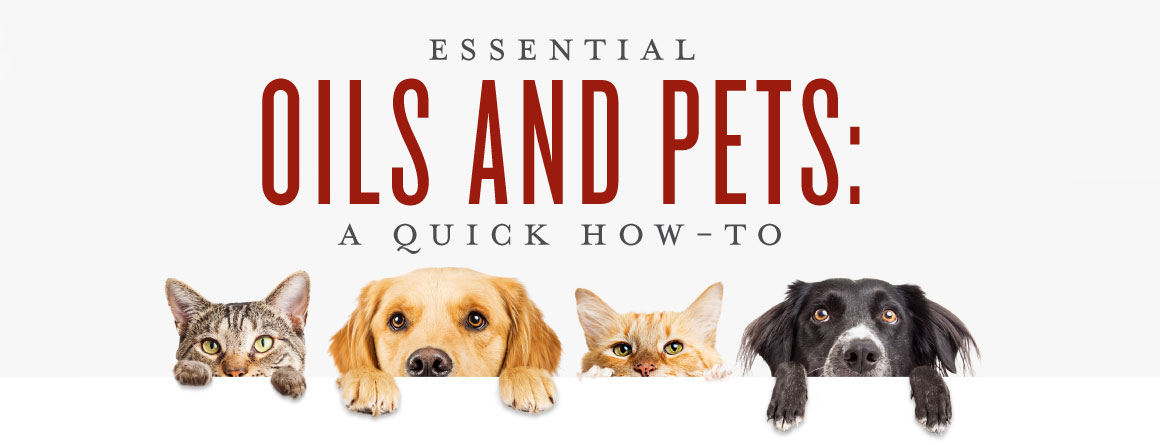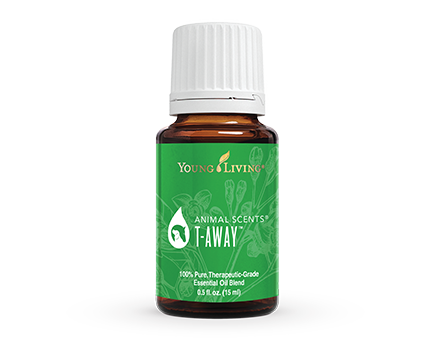You love to share essential oils with your family, so it makes sense that you want to share them with your pets as well! Before you begin using essential oils for pets, you need to know the answers to some important questions: Can you use essential oils on dogs, cats, and other pets the same way you use them on yourself? How much should you use? What is the best way to administer oils for topical and internal use?
Check out our quick and easy how-to guide for tips and info that will answer your questions about the different types of essential oils for dogs, cats, and other animals!*
It is important to note that animals cannot tell us if something is working or not, so we must exercise due caution and approach using oils on animals safely and responsibly.
It is your responsibility as an animal owner to do your proper research on the quality of essential oil and products you are applying and using around your animals. Not all essential oils are created equal. Make sure you are getting good information from qualified people who have used our Young Living oils with their animals successfully – this may or may not be an animal health professional.
Please note that these are general recommendations for use. Be aware that many veterinarians are still becoming aware of essential oils, so please refer to a Veterinarian that is skilled and trained in the use of essential oils or holistic practices for the best route to go with your animal. If your pet is pregnant, nursing, or has a medical condition, Consult a veterinarian with experience with essential oils before use.
Basic Guidelines

There are some general tips and suggestions you’ll want to keep in mind as you share essential oils with your furry friends.
- Animals are generally more sensitive to essential oils than humans are. It’s best to heavily dilute essential oils and use them in moderation.
- Use extreme caution when using essential oils on and around cats or dogs under 8 weeks old because they are developing at fast rates; it is easy to mess up the proper dilution for each breed and size.
- Every animal is different, so carefully observe how your animal responds to essential oils. Use common sense and good judgment as you try different methods. If an individual starts salivating or you notice a change in stool or vomiting or lack of appetite when using essential oils, more investigation into what oil was used, how much was used and the application technique should be done as there may be other concurrent issues happening.
- Be especially careful to not get essential oils in an animal’s eyes.
- If diffusing, always allow cats or dogs access to areas where they can avoid the diffused oil.
- With all animals, use extreme caution when using high-phenol oils—such as Oregano, Wintergreen, Clove, Mountain Savory, and Thyme. This is especially important with cats.
- Use special caution with cats and essential oils. Consult a veterinarian with essential oil experience before use around them.
Essential Oil Acclimation
Your pets may need some time to adjust to the new scents and sensations of essential oils. Use these tips to introduce your pets to essential oils easily and comfortably.
- Wear essential oils throughout the day, so your pets will be exposed to the aroma as you hold them, play, or cuddle on the couch.
- Diffuse essential oils in spaces where your pets like to relax. A safe introduction to pets often starts with diffusing in their area (1-2 drops in a water-based diffuser) with an exit option. This gives a very LOW concentration into the air space and is a good place to start. Closely watch for signs of irritation—such as whining, sniffing, nervousness, and excessive scratching—while diffusing around them.
- Apply an essential oil to your hands and let your pets smell them so that they can explore the scent on their terms.
- If your pets are jittery or resistant to essential oils, don’t try to force your pets to stay around you and the area you are diffusing essential oils. Our pet’s sense of smell is very heightened compared to ours as humans. Small amounts over time will help our animals ease into being around essential oils.
 Dilution for Topical Application
Dilution for Topical Application
Your animal’s size affects the amount of oil you should use and how much you should dilute for topical application.
- For cats, small dogs, and other smaller animals, use a carrier oil—such as V-6™ Vegetable Oil Complex—to dilute the essential oil before application. We suggest a 9:1 ratio of carrier oil to essential oil.
- For medium-sized dogs dilute 4:1 carrier oil to essential oil.
- If you’re using essential oils on medium-sized animals—like large dogs—dilute 3:1 carrier oil to essential oil.
- For very large animals—including horses and cattle—start with a 1:1 dilution on the back and, if desired, move to the directions indicated on the bottle.
Topical Use
Once your pets are used to essential oils, they’ll better handle topical application. Remember these tips as you experiment with using essential oils on your pets.
 We recommend applying to the back for dogs and cats, being sure to rub your hands together until they are no longer shiny before rubbing the essential oil on the pet.
We recommend applying to the back for dogs and cats, being sure to rub your hands together until they are no longer shiny before rubbing the essential oil on the pet.- Use caution when using and applying essential oils to the bottoms of animal paw pads. Many animals sweat and rid their bodies of toxins through their paw pads. Contact your veterinarian for proper application practices.
- For animals with hooves, apply to the spine and flanks, avoiding the face. Apply oils to places that allow them to evaporate and breathe. Do not apply oils under any tack or saddles.
- For an easy and comfortable application, rub oils between your own hands until they are no longer shiny, and then apply by stroking the animal.
- For easier application in large or hard-to-reach areas, combine essential oils with V-6 or water in a spray bottle.
- Unless otherwise directed by your veterinarian, use extreme caution daily use of essential oils with cats.
- Use Animal Scents® Ointment to soothe irritated skin or to help with the occasional scrape or burn.
Internal Use
Animals can ingest essential oils, but you need to follow some general rules before you serve up an oil-infused meal for your pets.
- We recommend consulting with a veterinarian before administering oils internally to your pets. You should not attempt to mix oils with food unless directed by a veterinarian.
If you choose to mix essential oils with your pet’s food, keep in mind that the smell may make the food undesirable to the pet; this is especially true for cats.
- If you apply oils to places on their body they can lick, they will likely consume some of the essential oil as they groom and play. Make sure you dilute heavily, so the amount your pet licks is minimal.
- Never force your pets to consume essential oils or food mixed with essential oils.
Supplemental Products
Young Living also offers a full line of animal-specific products, including essential oil blends made just for animals, cat treats, dental pet chews, and Animal Scents® Shampoo. Click here to find something your pets will love!
Looking for even more ways to show your furry friends some love? Check out our animals and oils infographic and our DIY paw balm for more pro tips!
*If your pet or animal has a known health issue, please consult your veterinarian before administering essential oils.




 If you choose to mix essential oils with your pet’s food, keep in mind that the smell may make the food undesirable to the pet; this is especially true for cats.
If you choose to mix essential oils with your pet’s food, keep in mind that the smell may make the food undesirable to the pet; this is especially true for cats.
Leave A Comment